Moxibustion is one of the oldest medical practices in China, primarily using mugwort (艾绒, ài róng) as the main material. It stimulates the body with heat from the herbs, promoting the flow of qi and blood through the meridians, thereby achieving the effects of warming, tonifying the body, and expelling pathogens, ultimately serving the purposes of health maintenance and disease prevention. There is a saying in folk medicine: “With three years of moxa at home, no doctor is needed.”
1. Dazhui (大椎) – The Largest Acupuncture Point in the Body
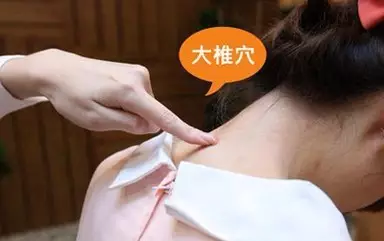
The Dazhui point is located on the Governing Vessel (督脉, dū mài) between the 7th cervical vertebra and the 1st thoracic vertebra. Also known as Bailao (百劳), it is the meeting point of the Governing Vessel, the Yang channels of the hands and feet, and the Yangwei Vessel (阳维脉, yáng wěi mài). This point is known for its ability to release the exterior, dispel wind, scatter cold, warm Yang, open Yang, clear the heart, calm the spirit, strengthen the brain, eliminate fatigue, enhance physical constitution, and strengthen the entire body.
The main diseases treated by Dazhui include: weak constitution in children, asthma, neck pain, shoulder pain, arm pain, and arm paralysis.
Modern research has found that moxibustion at Dazhui can be effective for weak constitution in children, fever with cough, cold intolerance in the elderly, fatigue caused by overthinking, headaches, dizziness, discomfort from prolonged bending or looking down, cervical spondylosis, and tension-type headaches.
Dazhui has a significant antipyretic effect; moxibustion at this point can prevent and treat colds, bronchitis, pneumonia, and other upper respiratory infections, and it can also be used for the prevention and treatment of emphysema and asthma.
2. The Source of Postnatal Vitality – Zusanli (足三里)
Zusanli is located on the anterior lateral side of the lower leg, 3 inches below the knee (犊鼻, dú bǐ), and one finger breadth from the anterior border of the tibia. Pressing this point elicits a distinct sensation of soreness and distension. Zusanli is one of the most frequently used acupuncture points in the body, representing the spleen and stomach as the source of postnatal vitality and the origin of qi and blood production.Zusanli is the first choice for qi deficiency and blood deficiency, as well as digestive disorders.
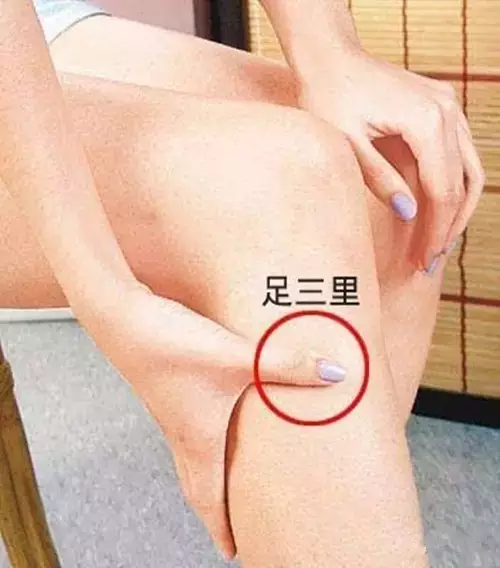
As the Stomach Meridian (足阳明胃经, zú yáng míng wèi jīng) is rich in qi and blood, Zusanli has the function of tonifying both qi and blood. It is commonly used to treat dizziness, tinnitus, insomnia, paralysis, constipation, stomach pain, abdominal distension, diarrhea, indigestion, poor appetite, gastric ulcers, gastritis, duodenal ulcers, gastric prolapse, appendicitis, and acute and chronic enteritis.
Modern medical research has proven that Zusanli can enhance immunity and has a bidirectional regulatory effect. Therefore, it has been used as a key point since ancient times.
Regular moxibustion at Zusanli is said to be more beneficial than consuming chicken soup. Everyone knows that chicken is a great tonic for the body, capable of tonifying qi and nourishing blood, and enhancing kidney function. However, modern chickens are not naturally grown but are fed with hormones and feed, which lacks nutrition and can be harmful to health. Thus, the ancient herbalist Sun Simiao (孙思邈) stated in his work “Qianjin Yaofang” (千金方) that “If you want to be healthy, keep Zusanli moist.” This means that to maintain good health, Zusanli should be regularly stimulated.
Zusanli can also be used to prevent presbyopia, stroke, and treat hyperlipidemia, among other conditions.
Moxibustion method: If your health is generally good and you are just maintaining wellness, perform moxibustion 2-3 times a week for at least 10 minutes per session at each point. If your health is poor and you have qi and blood deficiency, the moxibustion time should be longer, and it is best to follow moxibustion with massage for optimal results.
Observe for yourself; if you persist with moxibustion at Zusanli for 10 days, you will feel more energetic, sleep better, eat well, and have a rosy complexion.
3. Renmai Point – Guanyuan (关元)
Guanyuan is located in the lower abdomen, on the anterior midline, 3 inches below the navel. To locate it easily, place four fingers together below the navel, and the point is at the lower edge of the little finger.
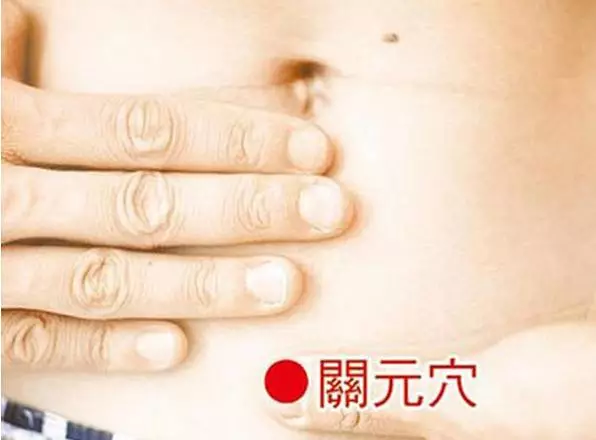
The function of Guanyuan: it warms kidney Yang, tonifies deficiency, and strengthens Yang. Guanyuan is the mu point of the Small Intestine Meridian (小肠经, xiǎo cháng jīng) and also intersects with the Spleen, Liver, Kidney, and Ren meridians.
Located in the lower jiao, it encompasses the kidneys, small intestine, bladder, uterus, and prostate, thus governing diseases of the three Yin meridians and the Ren meridian. It has the effects of tonifying the kidneys, strengthening Yang, warming the meridians, regulating qi and blood, and replenishing the body’s vital energy. It is a key point for men’s essence storage and women’s blood retention. This point has been regarded as a health-preserving key point from ancient times to the present.
Commonly used to treat:
A. Symptoms of qi deficiency: such as stroke, prolapse, physical weakness, easy fatigue, and cold intolerance.
B. Male reproductive disorders: such as nocturnal emissions, impotence, premature ejaculation, and low sexual function;
C. Female reproductive disorders: such as irregular menstruation, amenorrhea, dysmenorrhea, leukorrhea disorders, uterine prolapse, functional uterine bleeding, and various gynecological diseases.
D. Diseases of the lower jiao: such as dysentery, prolapse, hernia, blood in stool, frequent urination, urgency, and painful urination.
Especially for elderly friends, if you persist with moxibustion at Guanyuan during the summer, issues like frequent urination and prostate problems can resolve themselves. Regular moxibustion at Guanyuan can strengthen the body and prolong life; everyone should give it a try.
4. The Source of Innate Vitality – Shenque (神阙)
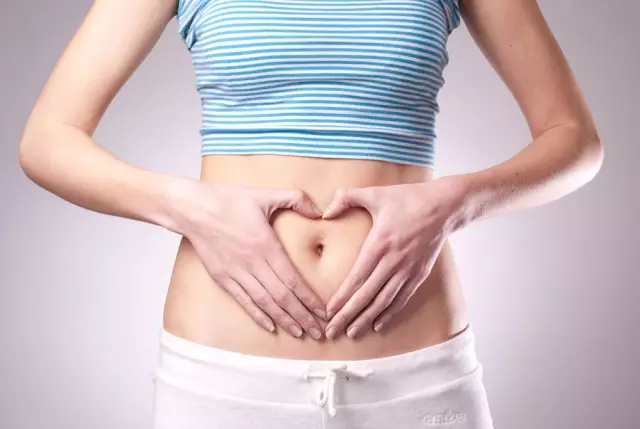
Shenque, commonly known as the “belly button,” is where the fetus connects to the placenta via the umbilical cord to receive nutrients from the mother. Throughout history, great importance has been placed on the care of Shenque, referred to as the “source of innate vitality and the root of life” in the human body.
This point can warm and promote the original Yang, revive the body, harmonize the spleen and stomach, and nourish qi and blood. It has preventive and therapeutic effects on indigestion, diarrhea, and weakness. It also enhances immunity, regulates organ function, and delays aging. Both massage and moxibustion can be used, with massage being the simplest and moxibustion being the most effective.
5. The Cure for All Spleen and Stomach Diseases – Zhongwan (中脘)

Zhongwan is located in the upper abdomen, on the anterior midline, 4 inches above the navel. To locate it easily, place your hand four fingers above the navel. Zhongwan is a meeting point of the six fu organs and is also the mu point of the stomach, thus regulating the functions of all six fu organs.
It is particularly effective for various stomach diseases, primarily treating digestive system issues such as stomach pain, abdominal pain, bloating, vomiting, acid reflux, indigestion, bowel sounds, diarrhea, and constipation. It can treat all spleen and stomach diseases, including gastritis, gastric ulcers, and duodenal ulcers. Both massage and moxibustion therapies can be used. If you have spleen and stomach issues, take action quickly.
6. The Gate of Life, Source of Vitality – Mingmen (命门)
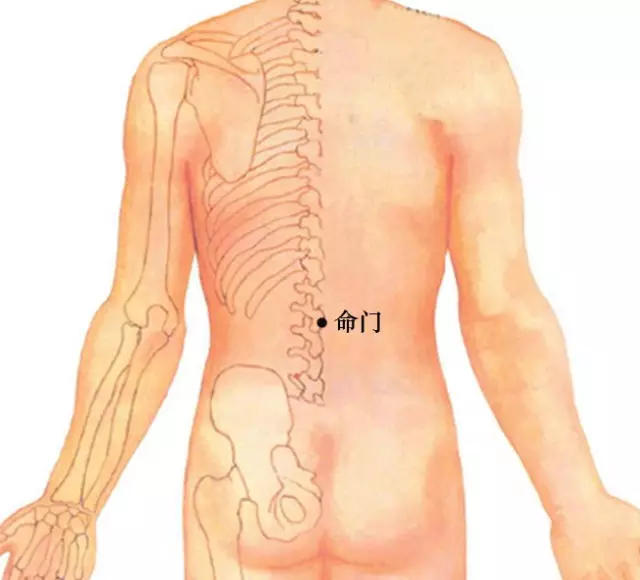
Mingmen is located in the lumbar region, on the posterior midline, below the 14th vertebra, which corresponds to the second lumbar vertebra’s spinous process, in front of Shenque. This point is situated between the two kidneys and is aligned with the kidney shu points of the Bladder Meridian (足太阳膀胱经, zú tài yáng páng guāng jīng). Therefore, it is known as the gate of life and is the source of vitality in the human body.
The function of Mingmen reflects the role of kidney Yang, significantly impacting male reproductive essence and female reproductive functions. It plays a warming, stimulating, and promoting role in the physiological activities of various organs, aiding in digestion, absorption, and metabolism of fluids.
Thus, it is considered the point for storing true fire. Deficiency of Mingmen fire is primarily manifested by cold limbs, weakness, or nocturnal diarrhea, impotence, premature ejaculation, and menstrual irregularities in women, as well as cold and infertility symptoms.
Clinical practice shows that combining Mingmen and Shenque points can effectively tonify Yang. Moxibustion at Mingmen can nourish kidney qi and invigorate the kidney meridian, while Shenque, belonging to the Ren meridian, is the root of life, and moxibustion at this point can support Yang and stabilize the body. The combination of these two points has the effect of warming the kidneys and strengthening Yang.
7. The First Choice for Kidney Tonification – Taixi (太溪)
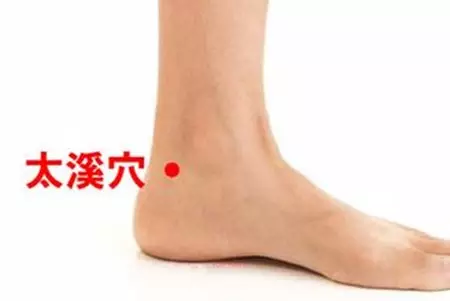
Taixi is located in the depression between the inner ankle and the Achilles tendon. When pressed firmly, a sensation of numbness may occur in the toes. Taixi is the source point of the Kidney Meridian (肾经, shèn jīng), where the original qi of the kidney flows and resides. The kidneys store essence and differentiate Yin and Yang, so whether it is kidney essence deficiency or insufficient kidney Yin and Yang, Taixi can be used for nourishment.
It is effective for treating kidney Yin deficiency, leading to symptoms such as sore throat, oral ulcers, tinnitus, hearing loss, insomnia, and forgetfulness, or kidney Yang deficiency presenting as cold limbs and lower limb edema. Pressing and massaging this point until a sensation of soreness is felt is recommended, and moxibustion can also be applied.
Consistent stimulation of these acupuncture points can promote longevity.
Disclaimer: The content of this article, including any formulas or therapies mentioned, is for reference only and should not be used indiscriminately. The article and images are sourced from the internet; if there are any copyright issues, please contact for removal.
Share this with those who care
The more people see it, the more health there is!
Today's Recommendation

